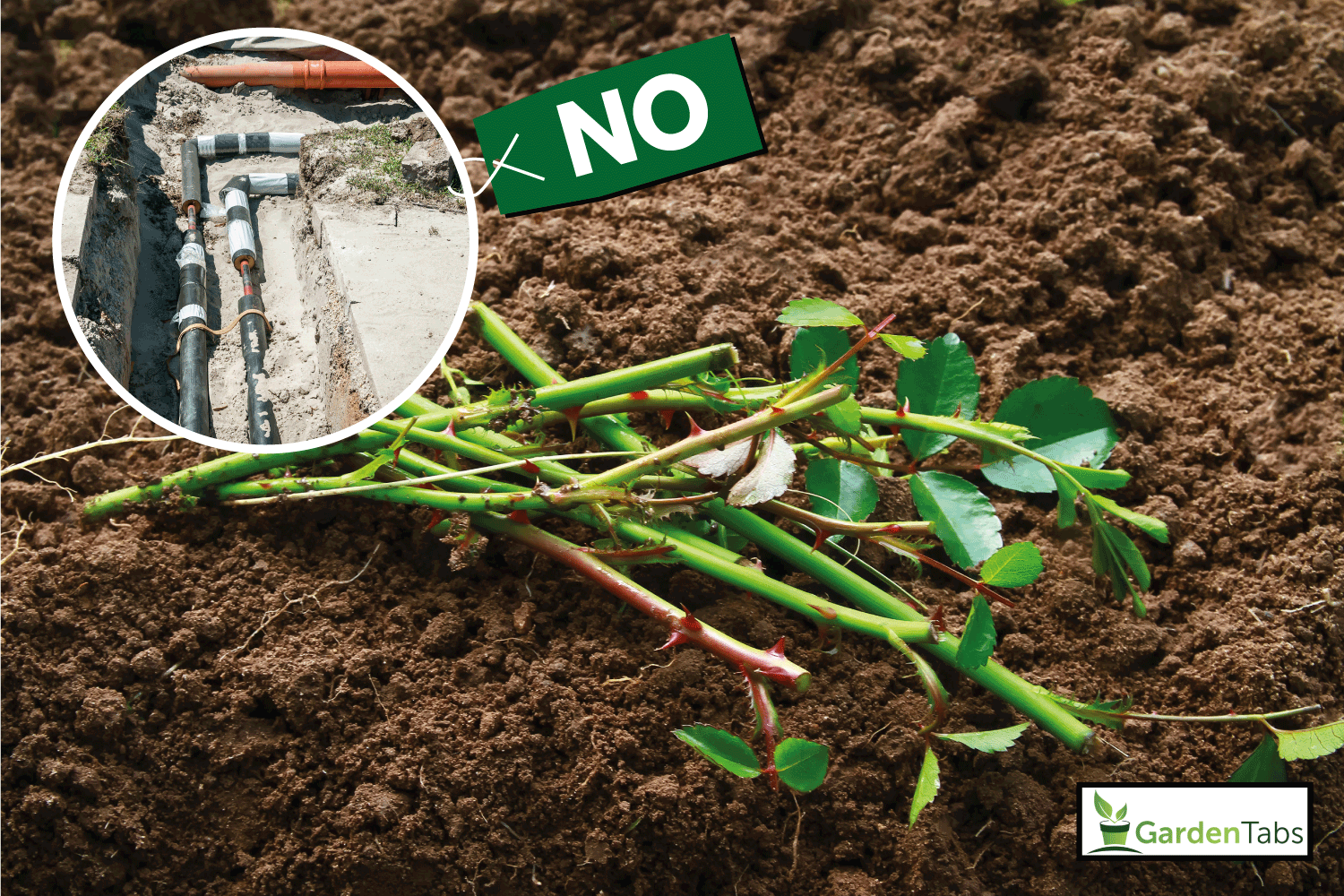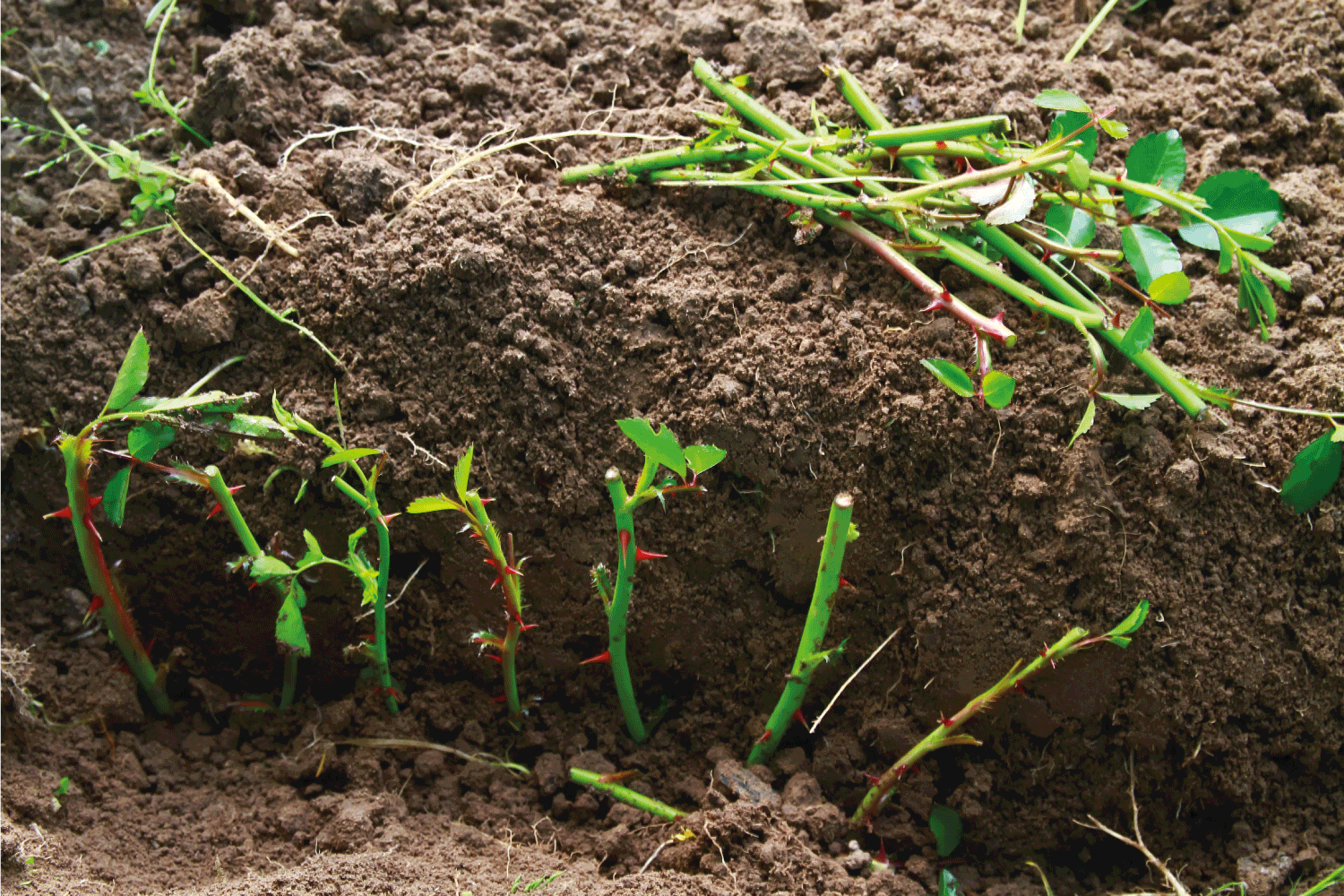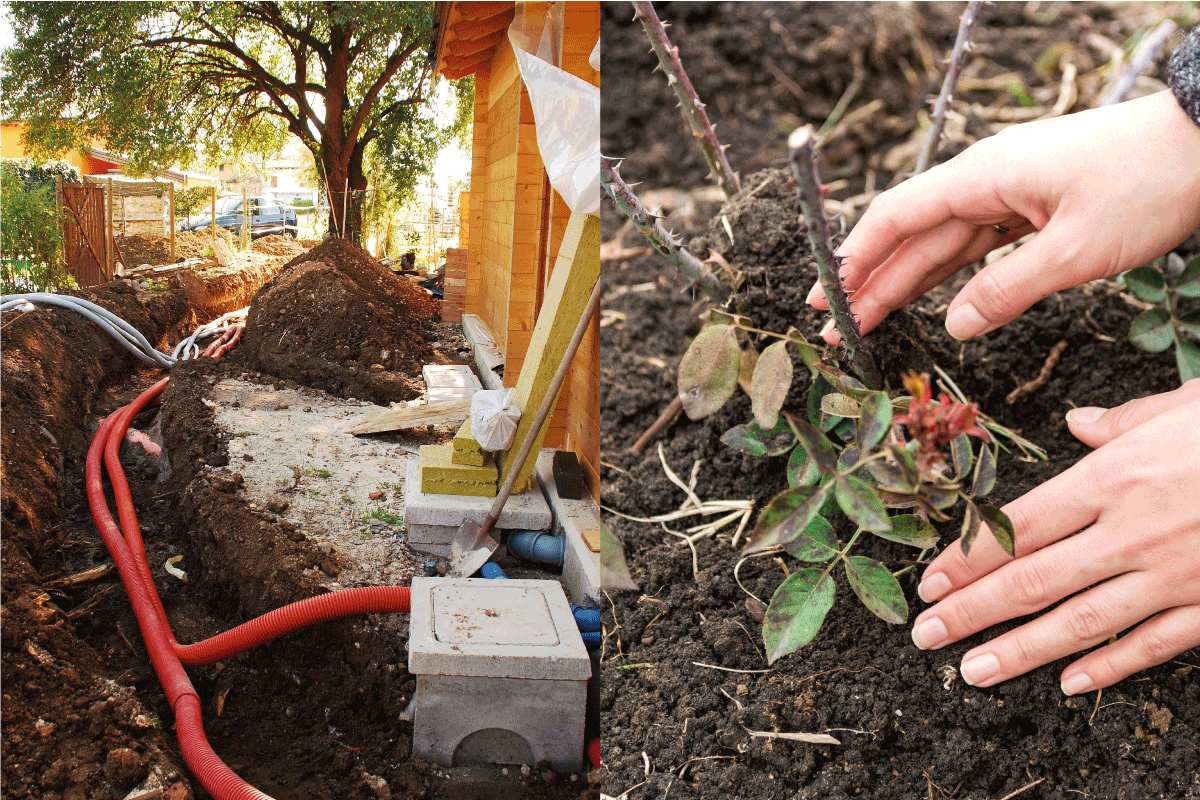Deciding to grow roses can be an exciting and rewarding hobby, but there are many things to consider when planting and growing roses in your home or garden. When installing garden rose plants, many wonder if the roots will damage their water and gas pipes. We have consulted with experts, and here is what they said.
Because rose roots are non-invasive, there is no need to worry about them causing harm to your pipes, concrete, or the foundation of your home. In the event that you have a pipe leaking, the roots will grow toward the pipe in an effort to gain access to the water; nevertheless, their strength is insufficient to break through the pipe.
Read on to learn more about the damage rose roots can cause and the preventive measures to take when planting your rose.

Can Rose Roots Damage Water and Gas Pipes?
The roots of most plants are drawn to water and oxygen sources. A rosebush's root system is similar to that of other plants. As a result, the roots of roses are often weaker than those of trees. There may be an opportunity for the rose's roots to penetrate and cause plumbing issues if there is a leak.
On the other hand, tree roots are significantly more likely to produce problems. Plants should be kept away from your sewer pipes as a precautionary measure.

Do Rose Bushes Have Deep Roots?
Yes, they do. Because the roots of rose bushes may grow to around three feet deep and spread out three feet wide, it is essential to allow your roses plenty of room when planting them.

How Close to House Can You Plant Roses?
If there isn't enough air circulation around roses, they are more likely to become infected with fungal diseases. To reduce the risk of this happening, you should plant roses with sufficient distance between them and the building's foundation and leave space between them and any other nearby plantings.
A distance of two feet between the rose bushes and other plants is sufficient for little rose bushes. The foundation should be at least 8 inches away from the rose bush. When you need to trim or spray the rose, a foot will also make it simpler to get to it.

Which Trees Cause The Most Pipe Damage?
Knowing which tree species are the most dangerous to underground pipes is essential if you're thinking of remodeling your garden, and adding new trees to increase aesthetics or property value is essential. Pipes can be damaged by a variety of tree and plant species, including:
- Aspen trees
- Elm trees
- Birch trees
- Sycamore trees
- Willows
- Oak and fig trees
- Maple trees
Even though these trees can potentially harm subterranean sewer systems seriously, they do not have to be entirely removed from consideration. A professional in plumbing or landscaping can tell you what the usual root length is about your pipe's depth, kind, and placement.
How Close to a Water Line Can You Plant a Tree?
A minimum distance of at least 10 feet between the planting site and the water line is required, and preferably it should be as least as long as the estimated height or spread of the tree canopy itself.
Tree roots like to develop quicker in cultivated soil that is well-drained, well-oxygenated, and rich in nutrients. If there is a large, deep area of broken-up soil, root growth will occur in the direction of the water pipe.
How Do You Stop Your Roots From Growing Around Water Pipes?
Tree roots are lured to water pipelines because of the quantity of water and nutrients. They continue to grow as soon as a minor crack or hole appears.
By impeding the passage of water into your water system, tree roots can cause considerable damage to the pipes in your house. The good news is that there are many strategies to avoid issues. Here are some of them.
Look for Tree Roots in Your Pipes
Check your pipes occasionally to see if anything is growing in them, and fix it while it isn't causing any harm. You're better off calling in a technician who can insert a camera line into your pipes so you can view the insides.
Cut Overgrown Roots
Removing sewage root growth is a good idea if you discover any in your system. Mechanical excavators are used for cutting them, or you may do it manually. Roots can be cut, although this isn't the best option because the roots will soon regrow.
Line Your Pipe
It might be tough to keep roots at bay if your pipe is riddled with fissures and breaks. Line your pipe if such is the case. Roots can't get into your pipes if a professional installs a sturdy plastic liner.
Make Use of a Root Killer
Some of the growth inside your pipes can be removed without injuring the remainder of the tree for trees with a deep root system. It is possible to use root poison to clean your pipes if you employ a plumber.
In the case of metam sodium and dichlobenil, the mixture clings to pipe walls. Roots will perish after a few hours of coming into touch with the poison. Roots cannot sprout in the same place because of the residue left behind.
Physically Separate Tree Roots from Pipes Using Barriers
You can prevent tree roots from entering your pipes by burying wooden or metal barriers along your pipes' path. This will prevent the roots from entering your pipes. To ensure that the barriers are functional, they must be buried to a depth of at least six inches below the surface of the soil.
How Do I Get Rid of Rose Roots?
Poisoning rose roots is one method for removing them from your property. The most efficient technique is a copper sulfate septic treatment, which involves poisoning the soil around the pipe to prevent the roots from growing back. The treatment won't hurt the rose itself; it will only have an effect on the roots that are close to the pipe.
An excessive amount of copper can be hazardous, and the treatment does require frequent maintenance. If you decide to go with this approach, you will need to be careful with the amount of copper that you apply to the affected area. Hiring an expert is the best course of action.
What Can You Plant Over a Gas Line?
The potential for tree roots to cause damage to water pipelines is common knowledge among gardeners; however, fewer people realize that tree roots may also cause harm to gas lines. There are some plants that are better than others if your chosen location is near an underground utility.
The most utility-friendly plants are those that have non-invasive roots, which means roots that are less likely to poke at pipes that are buried below the surface.
This category contains many woody plants, including trees and shrubs. If you are unsure where to begin, you might consider plants such as:
- Adams Crabapple
- Pawpaws
- Maple Varieties
- Juniper Varieties
When is The Best Time to Grow Bare-Root Roses?
When shopping for a bare-root rose you intend to plant it in the late winter or early spring. You should seek roots that have a healthy appearance, are well-formed, and are neither slimy nor dry and withered.
To prepare the roots for planting, soak them for a whole day in a pail of water. First, dig a wide hole, then use the soil you remove to create a cone shape in the middle of the hole. This will allow the roots to spread out more evenly.
Can Roses Cause Subsidence?
Only a tiny percentage of the population is affected by subsidence. When the foundations of a structure begin to sink due to the instability of the soil, this is known as subsidence. Clay soil, vegetation that sucks water from the soil, and leaking drains are some elements that contribute to the problem.
It is pretty uncommon for a rose to be the primary source of mechanical damage to a foundation because of root penetration. However, if there is a drainage issue near your home's foundation, they will take advantage of it and look for water.
If issues of damage arise, it will be of the utmost need to seek out the assistance of qualified personnel as soon as possible.

In Conclusion
Roots have the potential to inflict a significant amount of damage to plumbing systems. The most effective strategy for reducing the likelihood of this harm is to focus on preventing the underlying problems. When planting trees next to gas lines, it is essential to take into consideration both the eventual size of the tree and its closeness to any subterranean pipes, wires, or cables that may be present.
For more on roses and other plants, we recommend these engaging articles:
